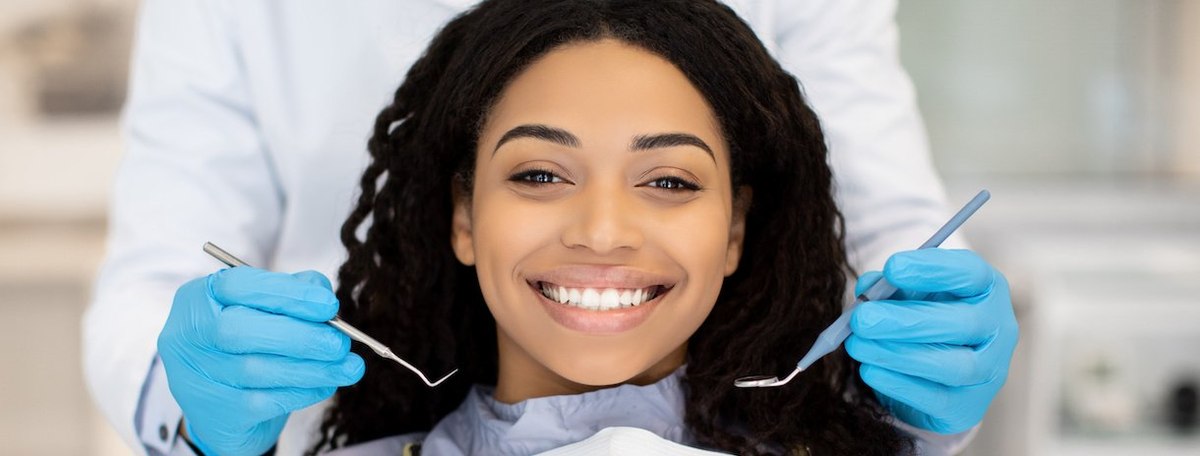A new YouGov survey asked Americans about their dental experiences and how conventionally attractive they believe their teeth are. The results show that a person’s teeth can have a significant impact on their self-confidence, and that Americans with higher family incomes are particularly likely to have straight, white teeth, possibly in part because they are more likely to have had cosmetic dentistry and orthodontic procedures.
Half (52%) of Americans have seen a dentist within the last year, including 39% who have visited in the last six months and 14% who last visited between six and 12 months ago. People who have dental insurance are more likely to have seen a dentist within the last year than are people without dental insurance (66% vs. 35%).
More than one-third of U.S. adults (37%) don’t have dental insurance. Among people without dental insurance, 25% have not seen a dentist in more than 10 years — including 6% who have never seen one.
Most Americans (58%) have dental insurance. Americans with an annual family income of $100,000 or more are more likely (75%) to have dental insurance than are those with a family income between $50,000 and $100,000 (60%) or with a family income less than $50,000 (51%).
How do Americans feel about visiting the dentist? One in five (20%) dislike it and 17% hate it. On the other end of the spectrum, 13% like it and 7% love it. And 40% are neutral.
Adults under 45 have more positive feelings about going to the dentist: 28% say they like (17%) or love (11%) it. Among older Americans, half as many (14%) like or love it.
Americans who have visited the dentist recently are more likely to say they like or love doing so. Among people whose most recent visit was within the last six months, 26% like or love going to the dentist.
People who haven’t visited the dentist in more than 10 years are far less likely to say they like or love doing so (6%). Among this group, 37% say they hate going to the dentist and 23% dislike it.
YouGov’s survey also asked Americans about their perception of their own teeth and how it affects their self-confidence.
Most Americans (75%) consider their teeth straight, including 28% who say their teeth are very straight and 46% who think they’re somewhat straight. As possible evidence for the value of orthodontic intervention, 34% of people who have had any kind of it — including metal braces, clear aligners, or retainers — say their teeth are very straight and 49% say their teeth are somewhat straight.
People with annual family incomes of $100,000 or more are especially likely to say they have very straight teeth (45%). One-third (32%) of people with an annual family income of between $50,000 and $100,000 say the same, as do 20% of people with incomes less than $50,000.
American adults with family incomes of less than $50,000 are more likely than higher earners to say their teeth are not very straight (18%) or not straight at all (12%).
When it comes to teeth whiteness, just 8% of Americans say their teeth are very white and 51% think their teeth are somewhat white. Another 29% say their teeth are not very white and 8% think their teeth are not white at all.
Income may play a small role here, with 69% of those who have an annual family income of at least $50,000 saying their teeth are at least somewhat white. Among people with lower family incomes, 50% say the same.
Half (52%) of Americans think most other people would find their teeth attractive, including 12% who say their teeth are very attractive and 40% who think they’re somewhat attractive. Around one-quarter (23%) say their teeth are somewhat unattractive and 9% think their teeth are very unattractive.
People who say their teeth are very straight are more likely to say their teeth are very attractive (29%). Among people who say their teeth are very or somewhat white, 73% think their teeth are attractive.
Americans with higher family income are more likely to say their teeth are attractive.
The vast majority of Americans (82%) say the appearance of their teeth influences their self-confidence, including 29% who say it has a great deal of influence on their self-confidence.
Women (37%) are more likely than men (21%) to say the appearance of their teeth influences their self-confidence a great deal.
Most Americans (70%) say it’s at least somewhat important to them to have teeth that are considered conventionally attractive. Women (35%) are more likely than men (23%) to say it’s very important.
Adults under 45 are more likely than older Americans to say it’s very important to them to have conventionally attractive teeth (39% vs. 21%).
To what lengths will Americans go to get what they consider conventionally attractive teeth?
Nearly one in five (17%) have had a cosmetic dentistry procedure, including 24% of Americans with an annual family income of $100,000 or more. Another 30% of Americans say they’ve considered getting cosmetic dentistry procedures, while 53% have not.
The most common cosmetic dental intervention polled about is professional teeth whitening, which 19% of Americans have gotten. Adults under 45 are about twice as likely as older Americans to have had this done (26% vs. 14%).
Fewer Americans have gotten cosmetic gum surgery or grafting (10%), dental bonding (8%), or dental veneers (8%).
In pursuit of straighter teeth, 32% of Americans have had orthodontic interventions. One in five (19%) have had metal braces, 15% have had a plastic removable retainer, 8% have had a removable acrylic retainer, 6% have had clear aligners such as Invisalign, and 5% have had a permanent retainer.
Adults under 45 (39%) are more likely than older Americans (26%) to have had some form of orthodontia.
Among Americans with an annual family income of $50,000 or higher, 40% have had orthodontia. Among those with lower incomes, 29% have had orthodontic work done.
Among the people who have gotten cosmetic dental work done, the vast majority (82%) say they are satisfied with the results, including 42% who are very satisfied.
— Taylor Orth and Carl Bialik contributed to this article
Related:
- Most Americans believe the media promotes an unattainable body image for women
- How Americans feel about their romantic partner’s looks
- Toilet talk: Polling Americans' potty preferences
See the results for this YouGov poll
Methodology: The YouGov poll was conducted online on September 20 - 25, 2023 among 1,000 U.S. adult citizens. Respondents were selected from YouGov’s opt-in panel using sample matching. A random sample (stratified by gender, age, race, education, geographic region, and voter registration) was selected from the 2019 American Community Survey. The sample was weighted according to gender, age, race, education, 2020 election turnout and presidential vote, baseline party identification, and current voter registration status. Demographic weighting targets come from the 2019 American Community Survey. Baseline party identification is the respondent’s most recent answer given prior to November 1, 2022, and is weighted to the estimated distribution at that time (33% Democratic, 31% Republican). The margin of error for the overall sample is approximately 4%.
Image: Adobe Stock (Prostock-studio)













